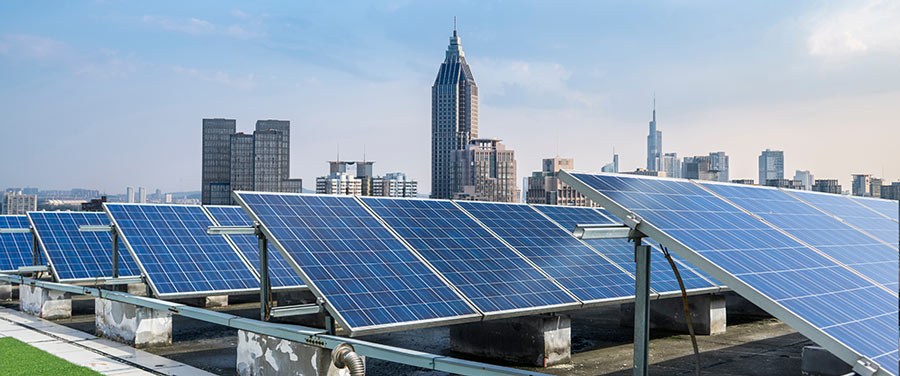How It Works
How does it work?
Solar technologies convert sunlight into electrical energy either through photovoltaic (PV) panels or through mirrors that concentrate solar radiation. This energy can be used to generate electricity or be stored in batteries or thermal storage.


Sunlight activates the panels
Each panel is constructed of a layer of silicon cells, a metal frame, a glass casing surrounded by a special film, and wiring. The panels are grouped together into “arrays” and placed on rooftops or in large outdoor spaces. The solar cells, which are also referred to as photovoltaic cells, absorb sunlight during daylight hours.
01
The cells produce electrical current
Inside of each solar cell is a thin semiconductor wafer made from two layers of silicon. One layer is positively charged, and the other negatively charged, forming an electric field. Light energy from the sun strikes a photovoltaic solar cell, it energizes the cell and causes electrons to ‘come loose’ from atoms within the semiconductor wafer. Those loose electrons are set into motion by the electric field surrounding the wafer, and this motion creates an electrical current.
02
The electrical energy is converted
You have solar panels working efficiently to transform sunlight into electricity.
Step4 The converted electricity powers your home.
Solar energy works exactly the same way as the electrical power generated through the grid by your electric utility company, so nothing within the home needs to change. Since you still remain connected to your traditional power company, you can automatically draw additional electricity to supplement any solar shortages from the grid.





